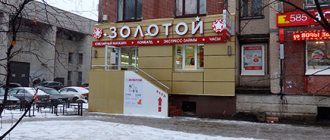Is it possible to do this?
Practicing lawyers note: making an apartment or private house uninhabited is as easy as shelling pears only in theory. In practice, the procedure may not be feasible. For example, if it is impossible to arrange a separate entrance to an office apartment.
Against this background, transferring a private house to non-residential stock looks like a simple matter. There are not many residents who will have to “beg” for adjacent territory. If the house is two or three floors, but belongs to one person, then all floors can be converted into offices.
In addition, there is almost always a small area near the house, which is also very useful. For example, for a parking lot.
The following video explains whether it is possible to transfer your private house or apartment on the ground floor to non-residential premises, and how to turn them into, for example, a cafe:
Step-by-step instructions for the procedure
The procedure for changing the status of an object from residential to non-residential and, conversely, from non-residential to residential is regulated by Art. 23 Housing Code of the Russian Federation. The translation procedure consists of successive stages:
- collecting documentation;
- publication of the redevelopment project;
- obtaining official approval from neighbors;
- approval of the translation by authorized bodies (interdepartmental commission, administration, etc.);
- carrying out construction work;
- obtaining an acceptance committee certificate and technical plan;
- registration of rights to a non-residential property.
Attention! Before carrying out the procedure, it is recommended to contact the territorial self-government body to clarify the current procedure, since at the regional level requirements may be added to the standard list.
Who should apply and where?
The owner of the object (or one of them), as well as an authorized person on the basis of a notarized power of attorney, has the right to carry out translation.
The appeal is made to the territorial authority at the location of the premises. The collected documentation is sent to the Property Management Department for the Interdepartmental Commission (IMC), administration or other authorized agency. Personal visits to institutions or through MFCs (multifunctional centers) are allowed.
When collecting the package of papers required for translation, citizens make requests to:
- Property Management Department.
- BTI (Bureau of Technical Inventory).
- Fire Supervision Department.
- SES.
- Management company.
- Passport Office.
- Project organization.
- UFRS (Office of the Federal Registration Service).
You can clarify the list of organizations and the package of documents in the Property Management Department.
Required documents
The documentation package for processing the translation includes:
- ID cards and birth papers of all owners;
- notarized power of attorney - if the translation is carried out by the owner’s representative;
- official consent of each owner for the transfer - for children under 18 years of age, the paper is drawn up by legal representatives;
- conclusion of the guardianship authority - if one of the owners is a minor;
- title documentation (USRN extract, certificate when issued before July 2021);
- application for transfer;
- redevelopment or reconstruction project;
- technical plan of the premises;
- floor plan of the building;
- technical report on the condition of the house and supporting structures - upon request;
- minutes of the general meeting of owners of apartments in the building on approval of the decision on transfer and the consent of each neighbor;
- certificate from the Department of Health about the purpose of other premises located on the same floor as the apartment;
- an extract from the house register - drawn up at the passport office and indicates that there are no registered persons in the living space;
- conclusions from special services, based on regional regulations (fire inspection, gas service, SES, and so on);
- acceptance committee report;
- technical plan of the cadastral engineer reflecting the changes made;
- application to Rosreestr for cadastral registration;
- USRN extract - issued upon successful completion of the transfer procedure.
Documentation is collected sequentially by contacting the appropriate authorities. After submitting the complete package of papers, the applicant is issued a receipt of acceptance.
Floor plan of the premises and technical passport
To obtain documentation, you first need to contact the Property Management Department to issue a power of attorney .
It is necessary to order a floor plan of the building from the BTI. A power of attorney is issued on the basis of an application from the owner of the premises or his authorized representative; it is also required to present a passport and title papers for the object. The document production period is 1 month. Next, you need to contact the BTI with a power of attorney. You will need to write an application to order a plan and provide registration documents. A technical passport with a floor plan can also be ordered from the BTI; applications through the MFC are allowed.
Ordering a redevelopment and reconstruction project
To obtain the document, you must select a design organization that is a member of the SRO with a valid permit to perform such work. An agreement is concluded with the company, documentation for the apartment is provided.
The finished project contains information:
- characteristics of the object;
- terms of reference indicating the purpose of the redevelopment;
- a detailed description of all redevelopment work, as well as those related to the impact on supporting structures;
- explanatory diagrams, drawings, photos;
- organizational aspects - indicating the storage location of materials, equipment requirements, safety measures, and so on.
Attention! It is recommended that the document be drawn up before obtaining consent for the transfer from neighbors, since owners need reliable information about upcoming changes.
Conclusions of sanitary-epidemiological and fire supervision
A document confirming the compliance of the premises with fire safety requirements is issued by the Fire Supervision Department. The inspector inspects the property and issues an opinion. A document on sanitary well-being is issued by the district SES. An employee of the institution inspects the premises and draws up a report.
Coordination with neighbors
Obtaining official approval from neighbors for the transfer is a mandatory step in the procedure. The owner of the future non-residential premises will need to provide:
- minutes of the general meeting of the house;
- written consent of each neighbor of the premises adjacent to the property in question.
At the general meeting, the decision is approved by voting. For the verdict to be valid, at least 50% of the owners must be present. Residents are notified in advance of the event (10 days in advance), based on the approved house rules: through notices, announcements, and so on.
The verdict is considered legal if it is accepted by at least 2/3 of the participating owners. The protocol with the verdict is drawn up in 2 copies.
If there is a majority of votes “for” in the entire house, but not in the specific entrance where the object in question is located, the transfer will not be approved.
If reconstruction or redevelopment is required, as a result of which common property is involved, it is necessary to obtain the consent of 100% of the owners. The minutes include a participant registration sheet, general lists of owners as of the date of the meeting, and powers of attorney for residents’ representatives.
The approval of each neighbor from adjacent premises is issued after receiving the general protocol. The paper is drawn up randomly; the following information must be indicated:
- Full name of the owner or name of the organization (if the neighbor is a legal entity);
- passport details;
- apartment number;
- details of title documents.
Consent is issued exclusively by the owners of the premises. This stage is considered the most difficult, since even the refusal of one neighbor makes the transfer procedure impossible. If the adjacent premises are not privatized, the municipality is its owner. It is required to obtain official consent from this body - registration is completed within 15 days.
Contacting the management company
To make a transfer you must provide:
- a certificate from the DEZ about the purpose of other premises located on the same floor with the object in question;
- technical report on the condition of the building.
Both documents are issued by the management company (housing department, homeowners association, etc.) based on an application from the owner or his representative.
Attention! If the technical report indicates that the house is in disrepair or is planned for demolition, the transfer procedure will be denied.
How to make an application?
With a package of documentation, the owners apply to the Property Management Department to obtain permission to transfer. Consideration and decision-making are carried out on the basis of an application in a unified form.
The document contains information:
- name of the authorized body;
- Full name and passport details of the applicant, contact details;
- personal information about the co-owners of the premises;
- address of the premises being transferred;
- request for transfer;
- list of redevelopment and reconstruction works (on request);
- explanations about the absence of grounds for refusal of transfer, according to Art. 22 Housing Code of the Russian Federation - location of the object on the ground floor, possibility of isolation, no encumbrances, and so on;
- list of attached documentation;
- date of registration and signature of the applicant.
Getting permission
The procedure for considering submitted documentation is regulated by Art. 23 LCDs and includes the stages:
- Drawing up the conclusion of an interdepartmental commission, architectural committee or other authorized department on planning approval.
- Checking the submitted documentation.
- Issuance of a resolution by the head of the administration on the new status of the premises.
Attention! The official decision includes a list of works that become mandatory and are controlled by authorized bodies.
The rendered verdict is sent to the applicant within three days after its adoption. At the same time, each owner of adjacent premises is notified of the changes.
Carrying out
After obtaining permission, construction work is carried out on redevelopment, which means changing the configuration of the object:
- organization of a separate exit;
- installing, removing or moving walls;
- resizing or sealing window and door openings;
- redistribution of areas within the facility;
- arrangement of the mezzanine and so on.
You cannot deviate from the approved project , otherwise this will result in refusal to further carry out the procedure and penalties. The work is carried out by contracting companies that are members of the SRO of builders. During the redevelopment, the safety measures outlined by the expert are taken into account, and the provisions of the law on ensuring silence at certain times of the day are observed.
Why do you need an acceptance committee report?
After the redevelopment is completed, a corresponding notification is sent to the administration.
A commission is formed from members of the Ministry of Internal Affairs, fire supervision, the housing department of the administration, the housing inspection and other departments. Next, the work is assessed and its compliance with the project is checked. If all requirements are met and there are no complaints, an acceptance committee report is issued. If any deficiencies are identified, they will need to be eliminated and the inspection repeated.
The act is necessary to order a technical plan, which serves as the basis for cadastral registration and registration of rights in Rosreestr. The plan is drawn up by a cadastral engineer who has a qualification certificate and membership in an SRO. It records the new characteristics of the premises in the form of an electronic document, which is sent to the owner and to Rosreestr. It is possible to provide data on paper.
Registration of property rights with the Federal Registration Service
The final stage of transferring premises from non-residential to residential and vice versa is the owner’s application to the Federal Registration Service (FRS). This can be done during a personal visit to the institution or through the MFC. The owners sign the application prepared for them. Next, you need to pay a state fee for registering property rights.
The application is accompanied by an acceptance certificate, a transfer order and a technical plan . In 5-7 days, an extract from the Unified State Register will be ready, which confirms the change in the status of the premises.
How to convert a private residential building into non-residential premises?
The entire procedure, list of documents and some nuances fit into three articles of the RF Housing Code (22 – 24). There are no special instructions for re-registration of a residential private house. Most often we are talking about the premises.
To transfer, you need to contact your local administration. If a city has an MFC, it is more convenient for many to transfer documents there. The list of documents is as follows:
- Statement. This form will be provided for completion when submitting documents.
- Confirmation of rights to the house (certificate).
- House plan.
- If redevelopment is needed to turn a residential building into an administrative building, then a full-fledged, high-quality project will be required.
A decision must be made within 45 days. Everything is simple, but only theoretically.
There is one point that owners of private houses often stumble over. This is a type of permitted use of the plot of land where their home is located. If the land is allocated for individual housing construction, that is, individual housing construction, then formally there cannot be an office building there. So the local administration will probably refuse the transfer.
This case is quite rare, but still occurs. To avoid such a problem, it is better to first get advice in your city from lawyers and administration representatives.
Another point: the presence/absence of conflicts with neighbors. Formally, their consent to convert a private residential building into a non-residential building is not required. In fact, this is where problems can arise. What will happen if a car repair shop suddenly appears in a row of cottages with its roar, car horns and not always decent cries of workers? Or will a dozen offices open in a private house, and clients’ cars will clutter the side of the street for tens of meters in both directions? Most likely, the result will be numerous complaints from neighbors.
To prevent this from happening, it is necessary to assess the possibilities of the surrounding area long before moving a private house. As well as the level of patience of residents of nearby houses.
Read on to learn how to transfer only part of an individual residential building to non-residential premises (non-residential stock).
The following video will tell you how to open a store in a private house, transferring it to a non-residential building:
When might it be required in an apartment building?
The first floors of houses in residential areas are perfect for opening offices, organizing a business in the service sector or retail trade. However, the law allows you to engage in business activities in residential premises without changing their legal status in rare situations. The entrepreneur must be registered and live in the apartment .
At the same time, by his activities he must not violate the rights of other people living in this premises, as well as neighbors. These provisions are spelled out in Art. 17 Housing Code of the Russian Federation. Other apartment owners whose activities are not permitted by law in residential premises will have to change the status of the premises in order to organize offices, beauty salons or shops.
We talked in detail about the nuances of converting residential premises into non-residential premises for different real estate, as well as in what situations changing the purpose of an object is not allowed in this article.
Changing the type of foundation of a part of a building
It is known that it is impossible to make a non-residential part of an apartment. Is it possible to do this with part of the house? Practice shows that this is possible, however, it is here that some imperfections of the housing code, which are noted by many experts in the field of jurisprudence, can fully manifest themselves.
One administration will equate a residential building to an apartment and refuse to transform part of the house. Another two-story private house will be considered like an apartment building and consent will be given. As with the purpose of a plot of land, a lot of preliminary work is needed here. Even in the interpretation of laws, some subjectivity is not excluded, so it is better to focus on local conditions.
And in conclusion, a little hint: in some cases it is not at all necessary to allocate non-residential premises in your home in order to do business. For example, if a person is a private tutor, hairdresser-stylist, accountant (various options are possible). In this case, it is quite possible to turn one of the rooms of the house into an office only by design, without changing the purpose. The main thing is that clients do not disturb their neighbors, but usually there are no problems in this regard.
Converting a private home into an office building can be quite an expensive and time-consuming undertaking. Only a careful approach and good preparation will allow you to carry out the entire procedure without unnecessary costs and hassle.
Refusal
In case of refusal to carry out the procedure, a protocol is sent to the owner with a mandatory indication of the reason with reference to the legal act.
A negative decision can be made on the following grounds (Article 24 of the LC):
- Failure to submit documentation or sending it to the wrong agency.
- Failure to comply with the terms of the transfer.
- Inconsistency of the redevelopment project with the put forward legislative requirements.
- Lack of official approval from other owners and neighbors.
If you disagree with the decision, the owner or his representative has the right to appeal it in court.
Restrictions on the transfer of non-residential properties.
According to the Decree of the Government of the Russian Federation of January 28, 2006 No. 47, every residential premises in Moscow and other populated areas must meet the following requirements:
- location in a residential area;
- load-bearing walls and fences must be in good condition and free of damage;
- the presence of all communications necessary to ensure life;
- air temperature not lower than eighteen degrees;
- buildings above five floors must have an elevator;
- availability of ventilation;
- absence of traumatic structures that pose a threat to the life and health of residents;
- ceiling height in rooms and kitchen is at least two and a half meters;
- every living room must have windows;
- absence of radiation, sound pressure and harmful substances in the air.
This is a list of the main characteristics that residential properties must have. If one of the points is missing, it will not be possible to convert part of the non-residential premises into residential premises.
What to do if the applicant is refused a transfer?
If the owner of the premises was denied the transfer of non-residential premises to residential, he may well go to court and try to appeal the refusal. This can be done within 3 months after you were refused.
You can submit documents to the district or city court. You can go there if the owner is a citizen of the Russian Federation. If the application is submitted by an entrepreneur or organization, then it is necessary to apply to the arbitration court.
The application must include information about the applicant and the defendant, information about the property, information about what laws were violated by the body that refused to transfer the status, a list of documents that confirm this, as well as a date and signature.
The following documents must be attached to this application: a copy of the claim, a document stating that you are the owner of the property, a floor plan of the premises, a project of how it is planned to rebuild the premises, a decision to refuse, as well as a receipt indicating that you have paid state duty.
The state duty for citizens of the Russian Federation is 300 rubles, but if the application is submitted by an organization, then you need to pay 2000 rubles.
The court considers the application and conducts an inspection in accordance with the necessary documents.
Both parties will be invited to court; if necessary, third parties and witnesses will be brought in. After examining the materials, the court makes a decision.
If the court found that the municipal authority was wrong and issued an incorrect decision, then the documents are submitted again and considered taking into account the opinion of the judge. The specialists who work there eliminate violations and issue a new, positive solution. After this decision, the owner can change the status of the premises, transfer non-residential premises to residential premises and register it with Rosreestr.
Attention!
The information on the site is more for informational purposes and provides basic knowledge on your problem.
Each individual case is individual, so you can check any information with our on-duty legal consultants 24/7 and free of charge.
Features of transferring an apartment to the residential category
The main feature is the affordable cost of translation, and the fact that some objects cannot receive residential status under any circumstances. This is due to the technical features of the property and legal requirements. Premises that cannot change their status include the following objects:
- Basements and ground floor properties. The floor level of the apartment should not be below ground level.
- Dachas and other buildings located outside the populated area on agricultural lands.
- Buildings without communications and internal partitions.
Other real estate, with the right approach and compliance with the chronology of actions, can be transferred to residential status. The main thing is to strictly comply with legal requirements and the correct algorithm of actions.





